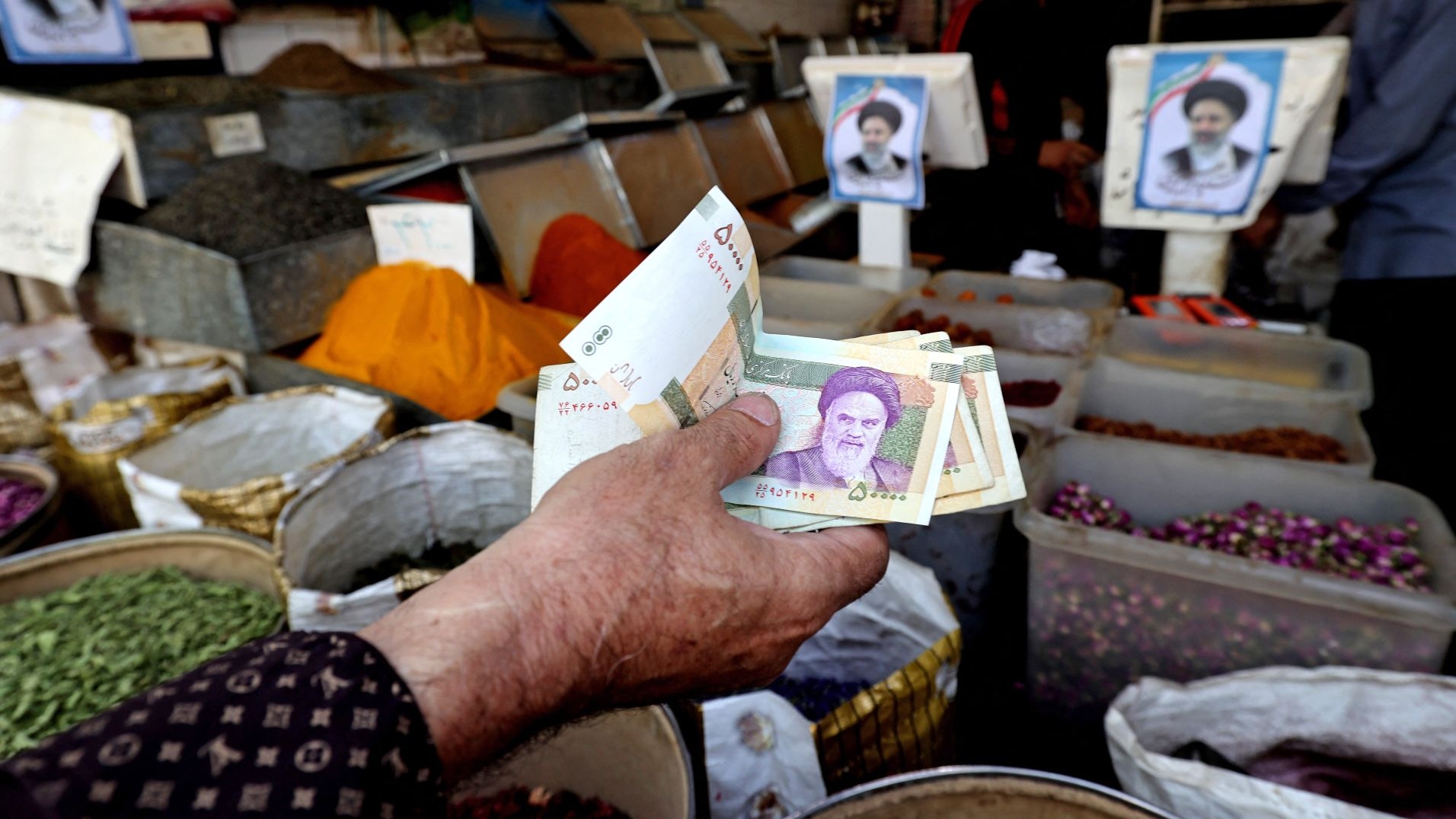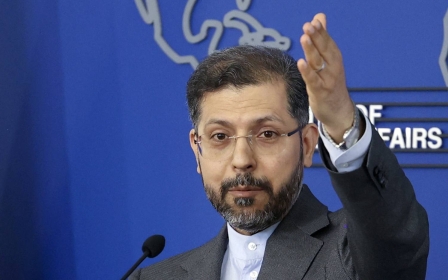How four years of US sanctions have devastated Iran's economy

Several months after negotiations seeking a return to the Iran nuclear deal reached their final round and a resolution was in sight, the talks have stalled, with fears that they could collapse altogether.
All the while, international sanctions have continued, with ordinary Iranians bearing the brunt as economic tremors make daily life harder for them.
After years of being financially blacklisted by the international community, Iran has learned to cope. However, the steady inflation, devaluation of the Iranian rial, and declining Global Domestic Product (GDP) have culminated in a crisis.
"Families that can only spend so much have to change what they put in their basket - many Iranians are consuming less meat, buying fewer speciality foods, and are even worrying about the cost of staples such as rice and bread," Esfyandar Batmanghlidj, a visiting fellow at the European Council on Foreign Relations, told Middle East Eye.
"While Iran is not facing an outright hunger crisis, the loss of purchasing power is a kind of humanitarian crisis."
"The diminished livelihoods and welfare of ordinary people ought to be recognised as a failure of policy intended to minimise humanitarian harms."
Middle East Eye has broken down the effect that international sanctions have had on Iran in a series of graphs.
Iran's Gross Domestic Product (GDP) was on the rise from 2010 to 2012 and was followed by a steady decline as a result of international sanctions on Tehran's oil exports.
Then in 2016, we saw an uptick as a result of the implementation of the Iran nuclear deal, only to see the GDP drastically drop as soon as former US President Donald Trump left the deal two years later.
By 2020, the GDP of the country was roughly a third of what it was in 2012.
The Consumer Price Index (CPI)* is a measure of the average change over time in the prices paid by consumers for goods and services.
At the same time that prices are rising in Iran overall, as is shown in a later graph, the average income in the country is decreasing, making everyday items like food and medicine more unaffordable.
"The impact of sanctions on Iran’s currency and the high rates of inflation seen in Iran during the sanctions period have made all manner of goods more expensive. Consumer prices are around 40 percent higher compared to last year," Batmanghlidj told MEE.
"That means that for millions of Iranian households, what they can afford has fundamentally changed."
Ali, a 26-year-old Iranian living in Tehran, says US sanctions have not only multiplied the prices of basic goods and services, but they have also made certain medicines hard to find in the past few years.
While the US has long argued that it provides humanitarian exceptions that allow medicine into the country, rights groups have said that the introduction of secondary sanctions has created fears for some companies to operate in Iran - thus hindering access to specialised types of medicine.
“I once could easily buy my father’s drugs, but it’s now too difficult to find his vital medicine like clopidogrel (plavix) and valsartan in the original form, and I have to get him the Iranian-made versions, which are not as effective, Ali told MEE.
And even when certain types of medicine are available, inflation in the country has made some of them too expensive for the average Iranian to afford. So even when pharmacy shelves are full, sanctions are stopping Iranians from accessing the drugs.
Inflation is one of the most underreported consequences of sanctions on Iran. Batmanghlidj highlights in his recent report that sanctions have had an adverse impact on the level of inflation seen in the country.
In the US, inflation has been making major headlines this year as we have seen it rise 8.5 percent over the past several months. This is forcing a significant chunk of Americans to live paycheque to paycheque.
But for Iranians, this phenomenon has been happening for roughly a decade, and with the inconclusiveness of the ongoing talks, many fear there is no end in sight to the continued inflation.
"Many people lost their jobs as a consequence of the reimposition of US sanctions," said Ayda, 38, the manager of a company that designs and sets up conference halls and movie theatres.
However, even if the US agrees to the nuclear deal, known as the Joint Comprehensive Plan of Action (JCPOA), and lifts the sanctions tomorrow, it would take at least 6-8 months for things to improve and for Iranians to be able to import needed goods or for the government to sell its oil and get the revenues.
"So even if a deal is reached right now, it's very unlikely that we'd see its benefits in Iran in less than a year," Ayda told MEE.
In the very early 2010s, there were some positive developments in Iran's economy. From 2010 to 2012, the average national income was on the rise each year.
Then everything came crashing down in 2012, and as of 2020 that average income is less than half of what it was that year.
Peyman, 24, who works at a grocery store, says his family sometimes fails to make ends meet amid daily price hikes, and all four members of his family, including his young sister, have to work 8-10 hours a day in order to live life with below-average income.
"No one cares about ordinary people. The leaders and politicians fight each other, while we are the ones who get crushed. I wish [Iran and the US] would stop behaving like children and sit for face-to-face talks for the people's sake. We can't stand it anymore."
*The time period for the Consumer Price Index graphs is shown in the Iranian calendar. The date on the first point, Ordibehesht 1397, corresponds to the time between 21 April 2018 and 21 May 2018. The date on the last point, Bahman 1400, corresponds to the time between 21 January 2022 and 19 February 2022.
Middle East Eye propose une couverture et une analyse indépendantes et incomparables du Moyen-Orient, de l’Afrique du Nord et d’autres régions du monde. Pour en savoir plus sur la reprise de ce contenu et les frais qui s’appliquent, veuillez remplir ce formulaire [en anglais]. Pour en savoir plus sur MEE, cliquez ici [en anglais].




